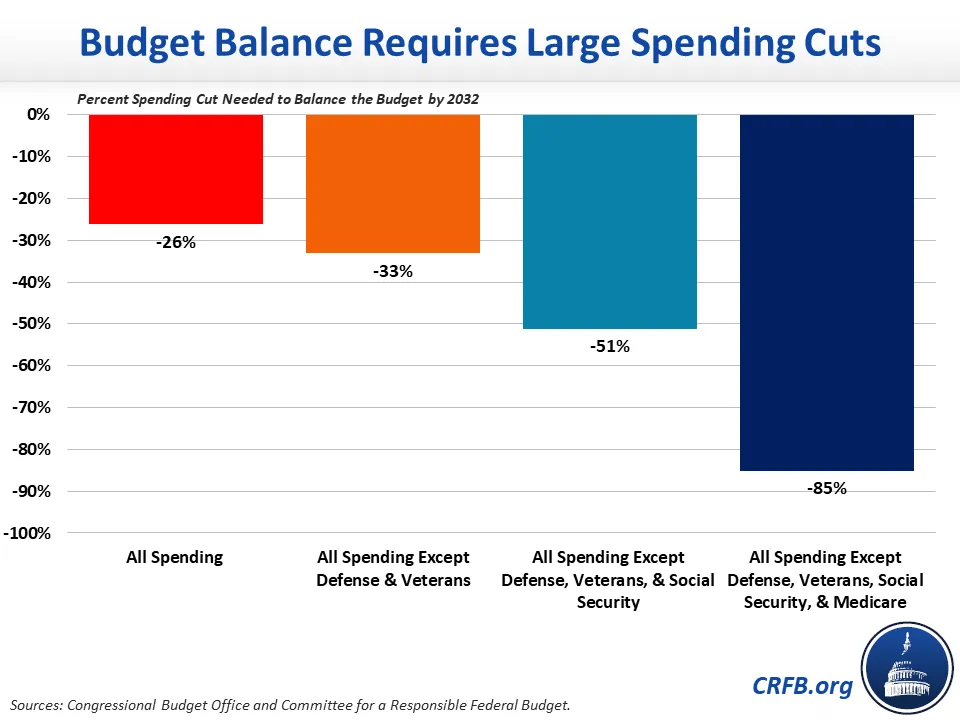Many posts have discussed federal deficits and the federal debt.
From the centrist Committee for a Responsible Federal Budget:
The exact amount of savings needed for full budget balance is uncertain and will depend both on budget projections in the Congressional Budget Office's forthcoming ten-year baseline as well as the path of any proposed policies. In the recent CRFB Fiscal Blueprint for Reducing Debt and Inflation, we estimated achieving balance would require roughly $14.6 trillion of deficit reduction through 2032, including over $2 trillion of policy savings (and nearly $400 billion of interest savings) in 2032 alone.1
To achieve these savings without more revenue, we estimate all spending in 2032 would need to be cut by 26 percent; this figure rises to 33 percent if defense and veterans spending is exempted from the cuts. For a sense of magnitude, applying this cut across the board would mean reducing annual Social Security benefits for a typical new retiree by $10,000 to $13,000 in 2032. It would also mean laying off 1.1 to 1.4 million federal employees (more than two-thirds of the civilian workforce if the military were exempted) and removing 20 to 25 million people from Medicaid eligibility.
Excluding Social Security and Medicare from cuts would make the task of balance even more unrealistic. Without touching spending on defense, veterans, or Social Security, all other spending would need to be cut by 51 percent. Also excluding Medicare would mean that remaining spending would need to ultimately be cut by 85 percent.
